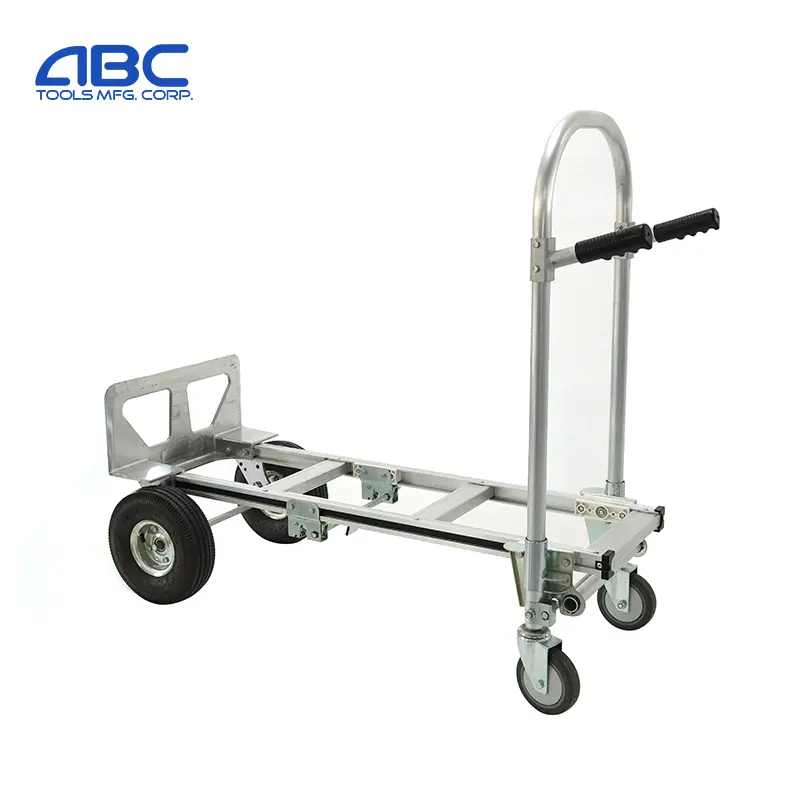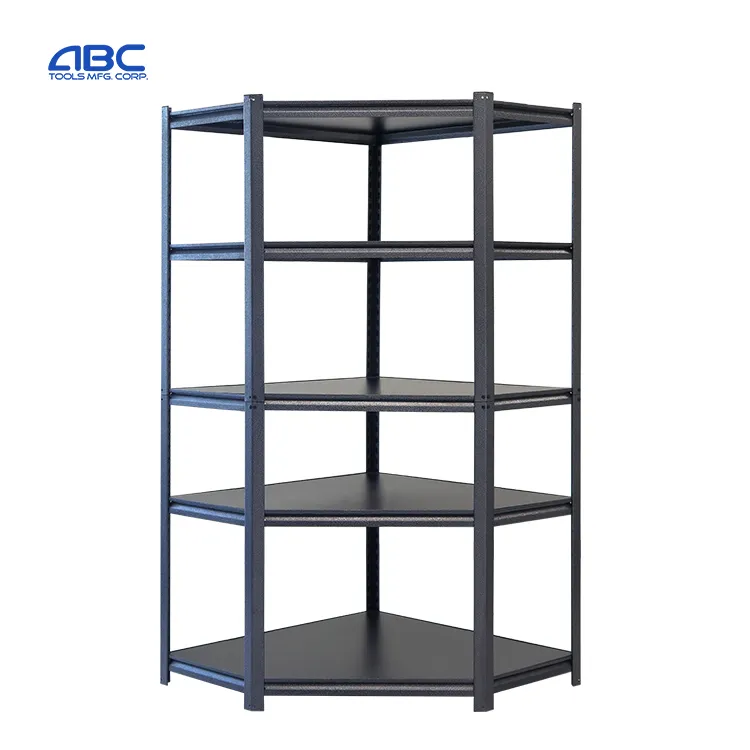Boxes stack up, deadlines loom, backs ache. Without the right hand truck, every job takes longer and costs more—let’s fix that today.
A hand truck (also called a dolly or cart) is a wheeled tool used to transport heavy loads safely and efficiently. The best choice depends on load capacity, terrain, and use: two‑wheel hand trucks for fast moves, convertible hand trucks for mixed tasks, appliance hand trucks for tall bulky items, platform cart for many boxes, and stair climbing hand truck for steps.

What is a hand truck and how is it different from a dolly or cart?
A hand truck is the L‑shaped tool with a handle, wheels, and a toe plate (also called a nose plate) that slips under the load. You tilt back and roll. A dolly is flatter—usually a low square with four wheels. A cart or platform cart has a deck where boxes sit on top. Each tool shines in different jobs, so professionals keep more than one.
From daily work in a warehouse to hotel corridors or retail backrooms, we see teams reach peak speed when they match the hand truck to the path: doorways, elevators, docks, and—yes—the occasional stair.
“Choose the right tool and you’ll move heavy goods faster, with fewer touches.”
That is exactly what we design for as a home storage shelving manufacturing plant that also builds hand trucks and carts to complement shelving workflows.
Which type of hand truck should I pick for my load and route?
Start with the type of hand truck that matches the job:
| Task | Best tool | Why |
|---|---|---|
| Many small boxes, short routes | Platform cart | Large surface, easy stacking, easy transport |
| Tall appliance hand moves (fridges, water heaters) | Appliance hand truck | High straps, wide frame, protects finishes |
| Mixed boxes + occasional long deck | convertible hand truck | Switches from two‑wheel to 4‑wheel in seconds |
| Tight elevators, backrooms | Compact two‑wheel hand truck | Light, quick turns |
| Steps and curbs | stair climbing hand truck | Tri‑star or crawler wheels climb safely |
| Outdoor yards, gravel | pneumatic wheels | Cushioned ride, easier to steer over gaps |
When it comes to moving through mixed surfaces, a convertible hand frame saves time. If you need to move tall bulky items like appliances, choose the purpose‑built frame that’s designed to handle them and provide additional support.
How much load capacity do I really need to move heavy items safely?
Capacity planning is simple: weigh the heaviest typical load, add packaging and moving supplies, then add 20–30% margin.
- Frequent office moves: 200–300 lb hand truck.
- Retail / parcel hubs: 300–500 lb dolly cart or platform cart.
- Appliances / machinery: 600–800 lb appliance hand truck.
- Mixed warehouse tasks: 400–700 lb convertible hand truck with deck.
Look for the stated weight capacity or lb capacity, but also check frame material, welds, and wheel spec. A higher load capacity with poor wheels still struggles on ramps. The right hand truck balances frame strength with wheels that are easier to maneuver.
When do convertible hand trucks beat traditional hand trucks?
A convertible hand truck flips between two‑wheel and four‑wheel modes. Teams love them because they replace two tools. In two‑wheel mode the hand truck darts through narrow doors. Flip to four‑wheel and you’ve got a short platform trucks style deck for more boxes.

We manufacture convertible hand models for clients who handle mixed loads and variable routes. They report fewer trips, less strain, and faster turns at the dock. If your crew often swaps between a hand cart and a deck cart, a convertible hand truck pays for itself quickly.
Steel vs. aluminum hand truck: which frame lasts longer and costs less?
Both work. A steel hand frame is rugged, economical, and easy to service. An aluminum hand truck is lighter, resists corrosion, and reduces push force—ideal for frequent moves and long routes. Many buyers mix fleets: steel for dock use, aluminum hand frames for indoor routes.
You’ll also see premium designs similar to Magliner hand styles with modular parts. Whatever you choose, specify the deck, nose plate, and wheel set for the surfaces you roll on.
What wheel and caster choices work best—solid, pneumatic, or TPR?
Wheels matter as much as frames:
- Pneumatic tires cushion shocks outdoors and over rough thresholds.
- Solid rubber wheels are tough and low maintenance.
- TPR or PU caster treads are quiet and floor‑friendly on warehouse concrete or hotel corridors.
- For platform cart or decked cart work, select 2 fixed + 2 swivel for tracking, or 4 swivel for tight spaces.

Rubber wheels grip better on ramps. PU rolls longer with lower effort. TPR runs quiet and clean. Choose the wheel set that meets your moving needs and floor type.
Warehouse layout tips: hand trucks and carts vs. platform trucks and pallet jacks
In most facilities, teams use hand trucks and carts for picking and staging, platform trucks for batch movement, and pallet jacks for bulk moves. That mix keeps touches low and speed high.
Quick layout ideas
Put moving dollies and two‑wheel hand truck frames near receiving.
Stage platform cart fleets at packing stations.
Keep pallet jacks at bulk aisles.
Add a high‑capacity utility cart where teams frequently transporting loads to maintenance rooms.
This layered approach is classic material handling equipment logic: the right tool at the right spot reduces travel and keeps aisles clear.
Safety checklist: reduce the risk of injury and handle heavy loads with ease
A safe hand truck habit is worth more than a strong frame.
Before you roll
- Inspect tires, hubs, and the toe plate.
- Center the load on the nose plate and strap tall items.
- Keep the route clear; ramps need dry, clean traction.
While moving
- Keep elbows close, tilt just enough to balance.
- Use legs, not back, to start and stop.
- On slopes, keep the hand truck below the load.
- On steps, use a helper or a stair climbing hand truck.
These habits reduce the risk to your team and protect product. Good gear and good training make work easier and safer.
Internal links to related products (ABCTools)
- Explore our PH150 150 kg steel folding platform hand truck for tight aisles and elevators.
Steel Folding Platform Trolley PH150 - Move larger cargo with the PH300 300 kg heavy duty hand platform.
PH300 Heavy Duty Platform Cart - Need a lightweight deck? See the LV150 aluminum hand platform with 400 lb capacity.
LV150 Aluminum Folding Platform Cart - Build complete bays with boltless rack that pairs perfectly with your hand truck workflow.
Boltless Rack Storage Systems

FAQs
What’s the difference between a hand truck and a dolly?
A hand truck has a vertical frame and toe plate; you tilt and roll. A dolly is a low four‑wheel platform for easy transport of short stacks. Many teams carry both because dollies offer faster floor moves while a hand truck fits doorways.
How do I size a hand truck for capacity hand needs?
Add up the heaviest expected load plus packaging and choose the next higher weight capacity. For variable jobs, a convertible hand truck gives headroom to handle heavier loads.
Are two-wheel hand trucks enough for my warehouse?
For light routes, yes. For batch picking or long runs, add a platform cart or platform trucks and a couple of pallet jacks. That mix of moving equipment keeps labor low.
Should I pick steel or aluminum?
Steel is cost‑effective and durable; aluminum hand truck frames are lighter and reduce strain. Mixed fleets are common—steel at docks, aluminum indoors.
Do I need straps or an appliance hand truck for tall loads?
If you’re moving fridges, cabinets, or vending machines, yes. An appliance hand frame with straps is designed to handle tall heavy loads and provide additional support.
Can I get powered hand assistance for stairs?
Yes. For frequent step routes with heavy appliances, a powered hand or motorized stair climbing hand unit protects staff and product.
Post time: Jul-28-2025
